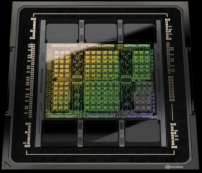Optimising video rendering for speed and accuracy is a critical task that all graphic designers and video editors should be aware of. With the proper techniques, you can dramatically reduce the time it takes to render out fully-edited videos and improve their overall visual fidelity – a must-have for any professional looking to step up their game in media production. In this blog post, we'll discuss cutting-edge strategies that provide maximum optimisation benefits while keeping workflow efficient.
Understand the fundamentals of hardware and software video rendering
Video rendering is an essential process when it comes to creating high-quality content. It involves using hardware and software to create a final video product to be uploaded, shared and enjoyed. To understand the fundamentals of video rendering, one must first understand the hardware and software components involved. The hardware used for rendering includes a powerful processor and a high-end graphics card that can handle the intense workload. Video rendering software involves editing software like Adobe Premiere Pro, Final Cut Pro, or Davinci Resolve to create a sequence of images that will be rendered into one cohesive video. By mastering the fundamentals of hardware and software video rendering, you can create stunning visual content that captivates your audience.
Utilise GPU and CPU acceleration for faster results
With the advancement of technology, it's never been easier to produce computer-generated visuals. However, even with the most powerful systems, rendering high-quality images and videos can be a lengthy process. This is where GPU and CPU acceleration come in. Powered by a dedicated graphics card, GPU rendering allows for the heavy lifting of complex calculations through parallel computing, freeing up the CPU to handle other tasks. CPU rendering, on the other hand, can often offer superior memory and precision. Combining both types of acceleration via CUDO Compute’s networked marketplace can dramatically reduce the time it takes to render 2D and 3D graphics, providing faster results for video production, gaming, and other computer-generated visuals.
Take advantage of Cloud Rendering to speed up complex processes
If you're working with complex 3D models, you know the pain of waiting for your computer to render those high-quality images. But there's a solution: cloud rendering. With cloud rendering, you can harness the power of remote servers to speed up your rendering times and improve your workflow. One great option for cloud rendering is the CUDO Compute marketplace, which allows you to access a network of computing nodes around the world. By offloading your rendering to the cloud, you can free up your computer's resources and finish your work faster. If you're tired of waiting for your computer to catch up with your ideas, consider taking advantage of cloud rendering today.
Investigate AI-based approaches for maximum optimisation
Rapid technological advancements have opened up endless possibilities for businesses to increase their efficiency and productivity. Artificial Intelligence (AI) and Machine Learning (ML) have taken the lead in revolutionising how companies operate. When it comes to maximum optimisation, AI-based approaches are definitely worth investigating. For example, regarding video rendering, AI algorithms have proven to be effective in reducing the time it takes to process high-quality videos. By implementing AI-based approaches, businesses can streamline workflows and save valuable time and resources. It's an exciting time for AI and ML, and the possibilities for optimisation are endless.
Experiment with compression techniques to reduce file size while maintaining quality
Video rendering is an essential part of modern media creation. However, as videos increase in resolution and length, the file sizes can quickly become unwieldy. This is where compression techniques come into play. There are various ways to compress video files, such as reducing the bit rate, changing the frame rate, or adjusting the resolution. However, it's crucial to do so in a way that maintains the video's quality and clarity, which can be a challenging balancing act. Experimenting with different compression techniques can help you find the sweet spot between file size and quality, so you can create media that looks great while remaining easy to share and store.
In conclusion, understanding the fundamentals of video rendering, utilising both GPU and CPU acceleration, utilising Cloud rendering solutions for complex projects, investing in AI-based optimisation approaches, and experimenting with file compression techniques can all help to improve the overall speed and quality of the video rendering process. Working with experienced professionals in this area can be incredibly beneficial to unlocking the potential of various complicated projects. With advancements in cloud computing and CUDO Compute’s highly efficient computing platform, design teams everywhere are empowered to create breathtaking visual content seamlessly and affordably. If you're looking for some assistance to bolster your video rendering workflow speed and capabilities or just need some insight on maximising your current performance, don't hesitate to contact us today!
About CUDO Compute
CUDO Compute is a fairer cloud computing platform for everyone. It provides access to distributed resources by leveraging underutilised computing globally on idle data centre hardware. It allows users to deploy virtual machines on the world’s first democratised cloud platform, finding the optimal resources in the ideal location at the best price.
CUDO Compute aims to democratise the public cloud by delivering a more sustainable economic, environmental, and societal model for computing by empowering businesses and individuals to monetise unused resources.
Our platform allows organisations and developers to deploy, run and scale based on demands without the constraints of centralised cloud environments. As a result, we realise significant availability, proximity and cost benefits for customers by simplifying their access to a broader pool of high-powered computing and distributed resources at the edge.
Learn more: LinkedIn , Twitter , YouTube , Get in touch .
Subscribe to our Newsletter
Subscribe to the CUDO Compute Newsletter to get the latest product news, updates and insights.

